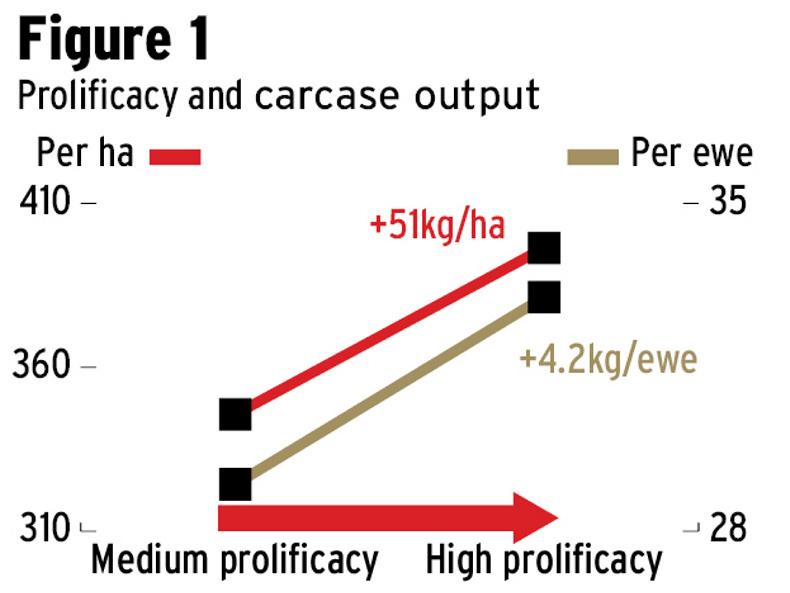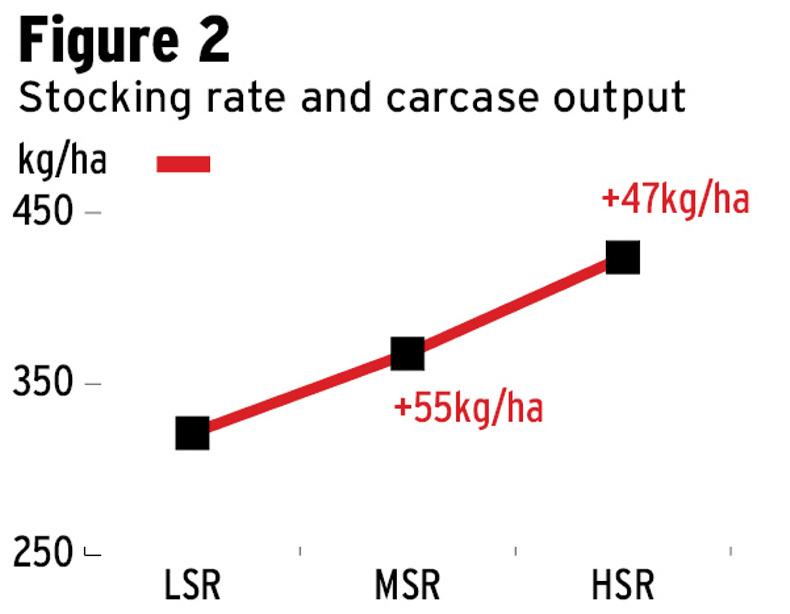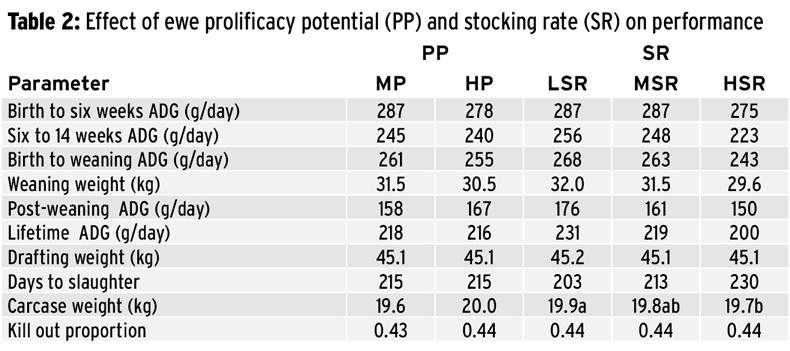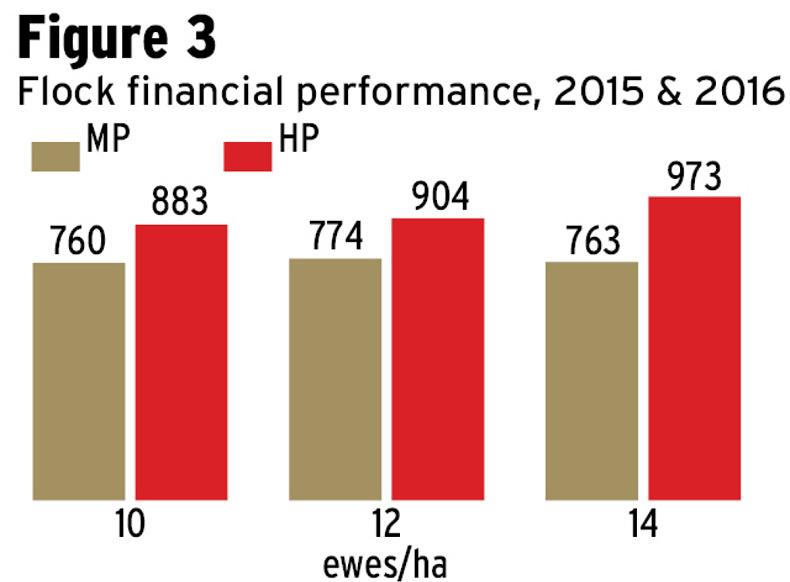Increasing output per hectare is a relatively straightforward task that can be completed by increasing the stocking rate and utilising high-prolificacy breeds. The big challenge is to increase output in a manner that will deliver to the farm’s bottom line.
This was one of the key messages delivered by researcher Philip Creighton in summarising the main learning points from five years in the research demonstration flocks in operation in Teagasc Athenry. “Many farms look at increasing stocking rate and prolificacy and then find that the farm is not capable of operating at the higher intensity. If there is no increase in grass growth then there is likely to be no increase in profit. Increasing prolificacy first and then stocking rate, in combination with increasing grass growth and utilisation, is key to increasing profit,” he said.
Six models were put through their paces with two prolificacy levels (high prolificacy weaning 1.7 lambs per ewe and medium prolificacy weaning 1.5 lambs per ewe) and three stocking rates of 10, 12 and 14 ewes per hectare. The aim of operating at these levels was to quantify the grass growth required and the grass utilisation possible in each system.

As detailed in Table 1, the high stocking rate (HSR) system grew and utilised the highest volume of grass, with the low stocking rate system (LSR) utilising a lower volume of herbage as grazed grass and delivering the highest surplus of silage due partly to a shorter winter housing period of 53 days compared with 89 for the medium stocking rate (MSR) groups and 80 for the HSR groups. The high stocking rate groups were also more prone to running short of grass, with supply particularly tight post turnout of ewes and lambs and in the back end of the year where ewes and lambs were competing for diminishing supplies. This led to on average 79% of lambs finished off grass in the HSR, 85% in the MSR and 91% in the LSR groups.

The difference in grass supply also had a knock-on effect on grazing management. The target pre-grazing height pre-weaning is 4.55cm for LSR, 4.15cm for MSR and 3.75cm for HSR groups. Post-grazing sward height is 5.5cm, 5.1cm and 4.7cm respectively for lambs. The HSR groups were capable of utilising 95% of grass above 3.5cm compared with 85% and 80% for the MSR and LSR groups respectively. Nitrogen application was set at 13kg/ewe. Recommended N levels based on the results coming from the trial are 11kg N/ewe at 10 ewes/ha, 12kg at 12 ewes and 13kg at 14 ewes/ha.

There was no difference in the volume of grass utilised between the medium- and high-prolificacy ewes. Philip said this is due to the higher demands from extra lambs in the high-prolificacy group being offset by ewes with a lower bodyweight and reduced maintenance requirement. “The high-prolificacy ewes are in the region of 5% more efficient than the lower prolificacy ewes.”

Animal performance
There were also significant differences in animal performance between the different systems. Philip said the high-prolificacy and high-stocking-rate groups achieved lower daily performance because of greater competition for grass supplies. Lambs were drafted at the same liveweight so as not to bring any unfair bias to the trial, but grass supplies were such that lambs in the LSR groups could have been brought to heavier carcase weights if required. There was no difference in the kill-out percentage or any significant differences in carcase conformation or fat score.
While the HSR and MSR systems with high prolificacy breeding were trickier to operate, they achieved a much higher output. Results over the last five years shows that progressing from a medium- to high-prolificacy level is capable of delivering an extra 51kg/ha carcase weight or 4.2kg/ewe on average, as reflected in Figure 1. Increasing from low to medium stocking rate will generate an extra 55kg of carcase output/ha (Figure 2) while going another step to HSR will add on a further 47kg carcase weight. This extra weight has huge potential to add to a farm’s gross margin.
Figure 3 shows the Teagasc eProfit Monitor for the flocks for the last two years. It shows that the system running 12 ewes/ha at high prolificacy (weaning 1.7 to 1.8 lambs) achieved a gross margin of €904/ha while the high-prolificacy 14 ewes/ha system returned a gross margin of €973/ha. These figures exclude direct payments. However, Philip said care is needed when comparing the systems as in previous years the high stocking rate system succumbed to the higher risk of greater input costs. His advice is for farmers to hold off progressing to this level until they are sure the farm can operate at this level, with the high prolificacy medium stocking rate system likely to be the best fit for many.

The next stage of the trial in Athenry is reducing from three stocking rate groups to two. Ewes will be run at 13 ewes/ha and 11 ewes/ha. This will test if 13 ewes is a better fit for the top output systems while also looking to utilise more grass in the 11 ewes/ha group.